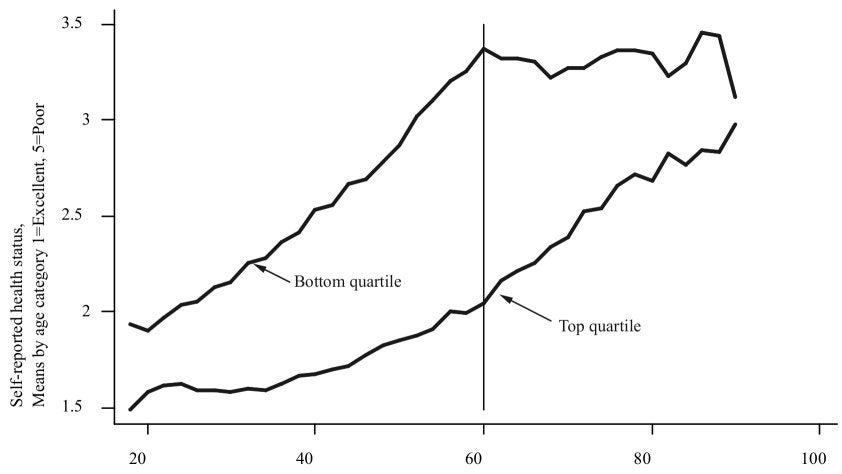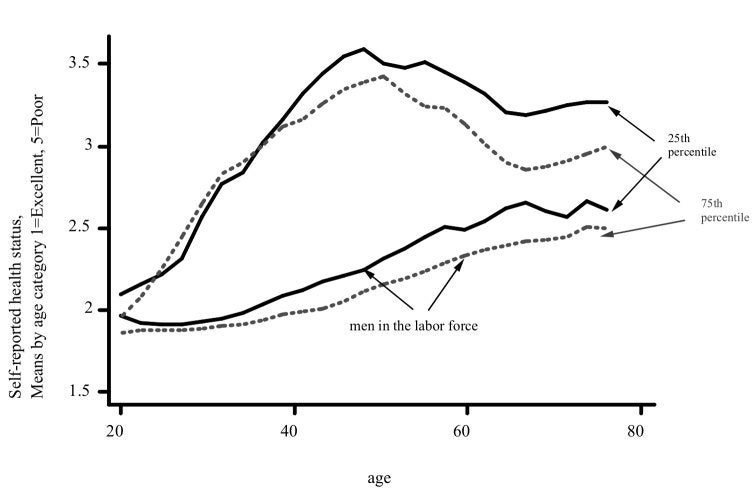How Health Declines with Age
It is a fact of life that health declines with age. When people are asked to rank their health status on a 5-point scale (where 1 is excellent and 5 is poor), the average response for men rises from 1.75 at age 20 to 2.5 at age 60. For women, there is a similar but somewhat smaller increase, from 2 to 2.5.
This initial finding from Broken Down by Work and Sex: How Our Health Declines (NBER Working Paper 9821) motivates authors Anne Case and Angus Deaton to explore further the age profile of health. They use data from sixteen waves of the National Health Interview Survey to generate a sample of about 700,000 persons aged 18-60 during the1986-2001 period.
The authors begin by pointing out an intriguing fact: when the age profile of health is disaggregated by income group, as is shown for men in Figure 1, it is apparent that health declines much more rapidly during the working years for those at the bottom of the income distribution than for those at the top.
The authors suspect that this may be explained in part by occupation - manual work involves more wear and tear on the body, so the health of manual workers may decline more rapidly than that of non-manual workers. To test this, the authors estimate the effect of occupation on the 5-point self-reported health index. They find that having a manual occupation such as machine operator or food service person raises one's health index by about 0.15 points relative to being an executive.
The analysis controls for income, so this is the effect of a manual occupation on health above and beyond the effect that comes from having a lower income. Income and education both have protective effects on health. Interestingly, the effect of having a manual occupation on health is very similar for men and women, suggesting that any occupation-related differences in health between men and women are due to the allocation of men and women across occupations, not from differences by sex within occupations.
As the authors are primarily interested in the effect of occupation on the age profile of health, they next examine this directly. They find that having a manual occupation is associated not only with a higher level of the self-reported health index but also with a larger increase in the index as the worker ages. Again, the results control for income and education and are similar for men and women.
One issue complicating the effort to study the links between income, occupation, and health is that workers in manual occupations may be more likely to exit the labor force for health-related reasons. Figure 2 explores this by showing the age profile of health for men at the 25th and 75th percentile of the income distribution by labor force status. While the health of working men at the 25th percentile worsens slightly faster with age than that of working men at the 75th percentile, this difference is swamped by the effect of being out of the labor force. This suggests that the relationship between income and the age profile of health shown in Figure 1 is largely driven by health-related withdrawal from the labor force reducing income, rather than by low income causing poor health.
This research was funded by a grant from the National Institute on Aging to the NBER and was summarized by Courtney Coile.




